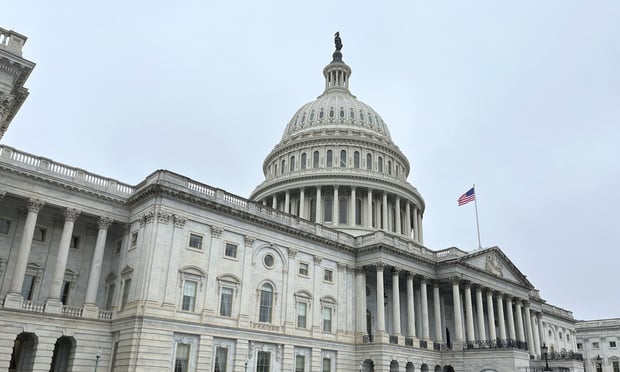The premiums multiemployer pension plans pay to the Pension Benefit Guarantee Corp. will have to increase exponentially for the federal insurance program to avoid insolvency, according to the agency’s most recent budget projections, released today.
The PBGC’s multiemployer program, which provides partial pension guarantees to more than 10 million participants in about 1,400 collectively bargained multiemployer plans, has more than a 50-percent chance of becoming insolvent by 2025, and a 90-percent chance by 2028, according to the fiscal year 2015 Projections Report.
Premium increases authorized in the 2014 Multiemployer Pension Reform Act have delayed the program’s impending insolvency by two years, according to a PBGC official in a press call.
But more increases — substantially more — are needed to address the program’s deficit, which is expected to remain high across the scores of simulations run by PBGC actuaries. The average of those projections shows the estimated deficit to be $53.4 billion in 2025.
Premium revenue for the program this year is expected to be less than $300 million.
In order for the PBGC to meet its projected obligations through 2035, premiums will have to increase more than 4.5 times that, according to the Multiemployer Pension Reform Act report, which was also released today. Under the 2014 act, the PBGC is obligated to report to Congress on the premiums needed to sustain the multiemployer program over a 10- and 20-year period.
The necessary increase, which amounts to 363 percent more than today’s premium revenue, is projected under a best-case scenario, whereby Congress either changes how premiums are assessed on the plans, or gives PBGC the authority to assess premiums on a plan-by-plan basis.
Request for authority
Currently, the PBGG has no authority to increase premiums or change how they are assessed — that power resides with Congress.
President Obama’s 2017 Budget Proposal asks Congress to move that authority to PBGC. It also asks Congress to give the agency the authority to assess variable rate premiums on some plans, as is done with PBGC’s single-employer insurance program.
That would allow PBGC to raise $15 billion in premium revenue over the next 10 years, which the White House’s budget said is necessary to stave insolvency.
During the press call, the agency underscored that the White House’s budget is asking to give PBGC authority to raise premiums and structure how they are assessed, and not asking for a tax-payer bailout.
A PBGC official suggested there is a growing awareness among lawmakers that the beleaguered multiemployer program cannot be saved without premium increases.
“There is a consensus among most of the stakeholders and members of Congress that increased premiums are needed, but I don’t know there is a consensus that PBGC will get $15 billion,” said a PBGC official. “It’s not likely we will get that, but it is likely we will get something.”
For years, dating back into the President George W. Bush administration, White House budgets have requested Congress cede premium assessment power to PBGC. Congress has not budged.
Asked why, a PBGC official said, “That’s a question for Congress.”
In a letter to Speaker of the House Paul Ryan, R-Wisconsin, Labor Secretary Thomas Perez, chairman of the board that oversees PBGC, cited PBGC estimates that 10 to 15 percent of the roughly 10 million participants in multiemployer plans are enrolled in pensions that are at risk of running out of money in the next 20 years.
Fate of the plans
Insolvency of the PBGC’s multiemployer insurance program would mean pension protections for participants in the worst-funded plans would be a fraction of existing protections. And existing protections are already limited, capped at less than $13,000 a year for participants with 30 years of service.
Time is of the essence, argued Perez, the labor secretary, in his letter to Ryan, the House speaker.
“We cannot afford to be complacent,” wrote Perez. “Nine years is a very short period in which to address a problem of this magnitude, particularly one that involves a poorly funded system with increasing payment obligations that extend for decades.”
In the Multiemployer Pension Reform Act Report to Congress, the PBGC explained that beyond necessary premium increases, how they are assessed is vital to both the insurance program’s survival and the fate of the plans in the most critical condition.
“Given the scale of the necessary premium increases, their design and structure are critical,” the report to Congress said.
“A well designed increase may encourage additional contributions, encourage continued participation in plans, and strengthen the multiemployer system. A poorly designed premium increase may encourage employer withdrawals and accelerate plan insolvency with a resulting cost to plan participants and a need for even larger premiums,” added PBGC.
In the single-employer program, which is likely to keep improving and even has the potential of reaching a surplus by 2025, the PBGC has the authority to set premiums on a per-participant basis and a variable rate basis. The PBGC also has the authority to set a termination premium when single-plan sponsors terminate pensions.
The multiemployer program is solely structured on a per-participant premium assessment. The White House’s budget is asking Congress to grant authority to PBGC to set a variable-rate premium based on a plan’s level of underfunding.
Doing so would give underfunded multiemployer plan sponsors “additional incentive to improve plan-funded status,” according to the MEPRA Report.
Penalty for leaving
The White House also wants the PBGC to have the ability to assess an “exit premium” to discourage sponsors from leaving plans.
Without the power of a variable premium and exit premium, the PBGC predicts that the current per-participant premiums would have to increase 533 percent over the next 20 years.
The PBGC said the average funded status of multiemployer plans is less than 50 percent, far lower than with plans in the single-employer program. That fact underscores the need to assess a variable premium on underfunded plans, and the need for the PBGC to have authority to make those assessments on a plan-by-plan basis, the PBGC said.
In a statement, Rep. John Kline, R-Minnesota and chairman of the House committee with partial oversight of the PBGC, called for urgent action in light of the today’s projections.
“Today is a reminder of the urgent need to enact additional reforms to strengthen multiemployer pensions, reforms that would modernize the system for workers and provide PBGC additional resources to meet its obligations,” said Kline.
Complete your profile to continue reading and get FREE access to BenefitsPRO, part of your ALM digital membership.
Your access to unlimited BenefitsPRO content isn’t changing.
Once you are an ALM digital member, you’ll receive:
- Breaking benefits news and analysis, on-site and via our newsletters and custom alerts
- Educational webcasts, white papers, and ebooks from industry thought leaders
- Critical converage of the property casualty insurance and financial advisory markets on our other ALM sites, PropertyCasualty360 and ThinkAdvisor
Already have an account? Sign In Now
© 2024 ALM Global, LLC, All Rights Reserved. Request academic re-use from www.copyright.com. All other uses, submit a request to [email protected]. For more information visit Asset & Logo Licensing.








